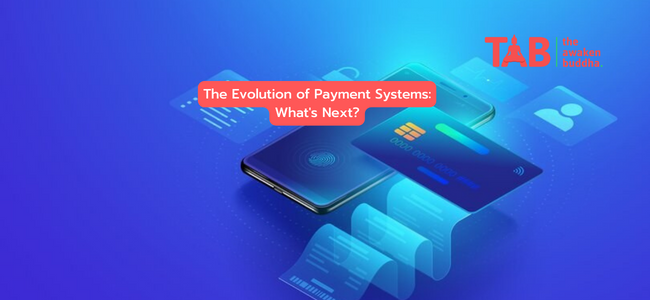In this digital age, payment systems have come a long way from traditional cash and check transactions. The payment industry has significantly transformed with the rise of e-commerce, mobile banking, and peer-to-peer payments. This article will explore the evolution of payment systems, from the early forms to present-day digital payments. We will also discuss what the future holds for payment systems and the challenges that come with it.
Table of Contents
1. Early Forms of Payment Systems
2. The Rise of Plastic Money
3. Digital Payments – A Game-Changer
4. Mobile Payments
5. Peer-to-Peer Payments
6. Cryptocurrency Payments
7. Contactless Payments
8. The Future of Payment Systems
9. Challenges in the Payment Industry
Introduction
Payment systems are vital to any economy, allowing people to exchange value for goods and services. Technological advancements and changing consumer behaviors have shaped the evolution of payment systems. Traditional payment methods, such as cash and checks, have given way to digital payments, mobile payments, and cryptocurrency payments, to name a few. This article will explore the history of payment systems and the future of this industry.
1. Early Forms of Payment Systems

Before the invention of money, people used the barter system to trade goods and services. As civilizations grew, so did the need for a more efficient payment system. The earliest forms of payment systems were based on tangible assets, such as gold and silver coins. Later, paper money and banknotes were introduced and became widely acknowledged as a medium of exchange.
2. The Rise of Plastic Money
In the mid-20th century, credit cards were introduced, revolutionizing the payment industry. The first credit card was issued by Diners Club in 1950, followed by American Express in 1958 and Visa in 1976. The introduction of credit cards allowed consumers to make purchases without carrying cash, making transactions more convenient.
3. Digital Payments – A Game-Changer
The evolution of the internet in the 1990s paved the path for a new form of payment system – digital payments. The first digital payment system was introduced by PayPal in 1998, allowing users to transfer money online securely. Digital payments have become increasingly famous in recent years, with the upgrade of e-commerce and online shopping. It has also enabled businesses to accept payments from customers globally without needing a physical presence.
4. Mobile Payments

The proliferation of smartphones has led to the growth of mobile payments. Mobile payments allow consumers to make payments through their mobile devices using digital wallets, such as Apple Pay and Google Wallet. Mobile payments are fast, convenient, and secure, making them an attractive option for consumers.
5. Peer-to-Peer Payments
Peer-to-peer or P2P payments are transactions between individuals without needing a middleman. P2P payments have become popular in recent years, with the upgrade of apps like Venmo and Cash App. These apps allow users to send and receive money from friends and family instantly, making it an attractive option for social payments.
6. Cryptocurrency Payments
Cryptocurrency payments are a new form of payment system that allows users to transfer money without the need for a central authority. Bitcoin, the foremost cryptocurrency, was introduced in 2009, and since then, several cryptocurrencies have emerged. Cryptocurrency payments are secure, fast, and transparent, making them an attractive option for international payments.
7. Contactless Payments
Contactless payments allow consumers to pay using their cards, smartphones, or wearables by tapping them on a payment terminal. This payment method is faster and more convenient than traditional, making it an increasingly popular option for consumers.
8. The Future of Payment Systems
The future of payment systems is exciting and holds many possibilities. As technology advances, payment systems become more secure, faster, and more convenient. One of the future possibilities is the use of biometric authentication, such as facial recognition or fingerprint scans, to enhance security and reduce fraud.
Another trend gaining momentum is using artificial intelligence (AI) and machine learning in payment systems. AI can help businesses to analyze payment data and detect fraudulent transactions in real time, making payment systems more secure.
Moreover, integrating payment systems with the Internet of Things (IoT) is another possibility. IoT devices such as smartwatches, refrigerators, and cars can make payments on behalf of their owners, making payments more seamless.
9. Challenges in the Payment Industry
Despite the numerous possibilities, the payment industry also faces several challenges. One of the significant challenges is cybersecurity. As payment systems become more digital and interconnected, they become more vulnerable to cyber-attacks. To combat this, payment providers must invest in advanced cybersecurity measures and continuously monitor their systems.
Another challenge is the issue of interoperability. Different payment systems often operate independently, making it challenging to transfer funds between them seamlessly. This can lead to delays, errors, and higher transaction fees. Therefore, payment providers must work towards creating a more interoperable payment ecosystem.
Conclusion
In conclusion, payment systems have come a long way from traditional cash and check transactions. The rise of digital, mobile, and cryptocurrency payments has transformed the payment industry, making payments faster, more convenient, and more secure. As technology advances, payment systems will continue to evolve, and new possibilities will emerge. However, the payment industry faces several challenges, such as cybersecurity and interoperability, that must be addressed to create a more seamless payment ecosystem.
FAQs
1. What is a payment system?
A payment system is a mechanism that allows people to exchange value for goods and services.
2. What are the different types of payment systems?
There are several types of payment systems, including cash, checks, credit cards, digital payments, mobile payments, peer-to-peer payments, cryptocurrency payments, and contactless payments.
3. What is the future of payment systems?
The future of payment systems is exciting and holds many possibilities. Some possibilities include biometric authentication, integrating payment systems with the Internet of Things, and using artificial intelligence and machine learning.
4. What are the challenges in the payment industry?
The payment industry faces several challenges, including cybersecurity, interoperability, and regulatory compliance.
5. Are digital payments secure?
Digital payments are secure, provided that appropriate security measures are in place, such as two-factor authentication, encryption, and fraud detection.










![Top 15 Highest Paid It Jobs In India For Freshers Experienced A Complete Guide Top 15 Highest Paid It Jobs In India For Freshers &Amp; Experienced [A Complete Guide]](https://theawakenbuddha.com/wp-content/uploads/2023/10/Top-15-Highest-Paid-IT-Jobs-in-India-for-Freshers-Experienced-A-Complete-Guide-260x195.webp)